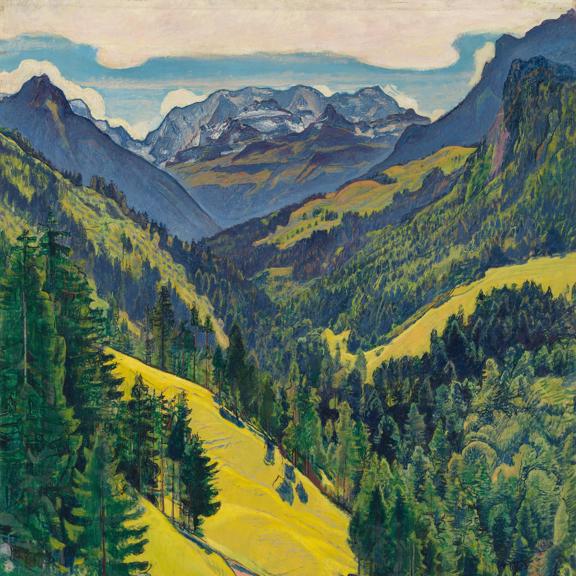One of the key figures of modernism, Ferdinand Hodler (1853-1918) is the leading Swiss artist of the turn of the twentieth century. Allying Swiss landscape painting with the most advanced currents of modern art, in ferment around 1900 across Europe, Hodler led a successful international career, exhibiting regularly in Paris and avant-garde milieus like the Berlin, Munich and Vienna Secessions.
A native of Berne, Ferdinand Hodler was born in an impoverished family. He trained in decorative painting and in his youth executed views of the Bernese Oberland aimed at the burgeoning tourist market. By 1871, talent recognised, he was studying at Switzerland’s only School of Fine Arts, in Geneva. Early works, mainly Alpine views, were highly naturalistic in Alexandre Calame’s vein – indeed, in 1874 he won the locally prestigious Concours Calame. A fascination with eurythmics, indebted to modern dance, influenced his syncopated manner of depicting large groups of figures. Landscapes remained a constant, however, and in the final years of the old century they began to evolve in the direction of strong colour and the stylisation of natural forms, suggesting the ways in which earth, water and sky can be seen to fall into simple, sinuous patterns. He died in Geneva in 1918 fêted as a national hero.

